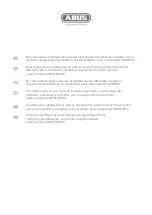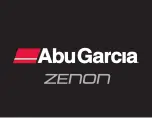
Programming
Chapter 4
AT-DIO-32F User Manual
4-6
© National Instruments Corporation
Bit
Name
Description (continued)
10
DIOBEN
Port B Handshaking Enable Bit.
When DIOBEN is set, Port B is enabled for handshaking.
9
DIOAEN
Port A Handshaking Enable Bit.
When DIOAEN is set, Port A is enabled for handshaking.
8
LRESET1
Local Reset for Group 1 Bit.
Setting and clearing LRESET1 resets the handshaking circuitry for
Group 1. Handshaking configuration bits must be reset after an
LRESET1.
7
X
Don't Care Bit.
This bit is unused on the Revision C and later revisions of the
board. On the Revision B board this bit is used as the Group 1
Handshaking Enable Bit.
6
INVRQ1
Group 1 Request Invert Bit.
When INVRQ1 is set, the handshaking request REQ1 is considered
an active low signal. Group 1 recognizes a request when REQ1 is
low. When INVRQ1 is cleared, REQ1 is considered an active high
signal. Group 1 recognizes a request when REQ1 is high.
5
DBLBUFA
Port A Double-Buffer Enable Bit.
If DBLBUFA is set, Port A is double-buffered. When Port A is
configured as an output port, a write operation to the port loads
data into the first buffer of the port. When a REQ1 is received, the
data is transferred to the second buffer of the port, which dumps
the data to the digital I/O connector. Double-buffering is usually
used for pattern generation. If DBLBUFA is cleared, Port A is a
single buffer; that is, data written to the port is immediately
dumped to the digital I/O connector. When Port A is configured as
an input port and DBLBUFA is set, an active level or edge of a
REQ1 signal latches the data into the input buffer of Port A. A
read operation reads the data in the buffer instead of the I/O
connector. If DBLBUFA is cleared, the port is transparent; that is,
a read operation reads the data on the I/O connector.
4
PULSE1
Group 1 Pulse Mode Bit.
When PULSE1 is set, the Group 1 handshaking signals REQ1 and
ACK1 are configured as pulse signals. When PULSE1 is cleared,
the Group 1 handshaking signals are configured as level signals.
3
EDGE1
Group 1 Leading/Trailing Pulse Mode Bit.
When EDGE1 and PULSE1 are both set, the Group 1 handshaking
signals are active on the trailing edge of the pulse. When EDGE1
is cleared and PULSE1 is set, the Group 1 handshaking signals are
active on the leading edge of the pulse.
Содержание AT-DIO-32F
Страница 19: ......
Страница 101: ......
Страница 102: ......
Страница 123: ......
Страница 124: ......
Страница 125: ......
Страница 126: ......
Страница 127: ......
Страница 128: ......
Страница 129: ......
Страница 130: ......
Страница 131: ......
Страница 132: ......
Страница 133: ......
Страница 134: ......
Страница 135: ......
Страница 136: ......
Страница 137: ......
Страница 138: ......
Страница 139: ......
Страница 140: ......
Страница 141: ......
Страница 142: ......
Страница 143: ......
















































